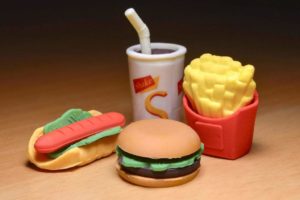Restaurant approaches to displaying nutritional information online – March 2021
The UK Government has proposed mandatory in-store calorie labelling for large food businesses with over 250 employees as part of its most recent obesity strategy.
The current plan indicates that the labelling requirement will extend to online sales, though specific details of how calorie information should be displayed on websites have not been finalised. Online calorie and nutritional information are currently provided in a range of different formats. We take a look at why this matters for the public’s health and research.
Jump to:
- Menu labelling – a nudge for customers and companies?
- Current presentation of information on websites
- What is effective menu labelling practice?
- Menu labelling suggestions
- References and further reading
Brief in Brief
- Providing calorie information on restaurant menus may support healthier customer choices and prompt restaurants to change the food they serve.
- Current practice varies widely: information provided alongside individual products, on separate pages in the form of tables and lists for all products, and in downloadable pdfs.
- Studies suggest presentation format may change how effective menu labelling is in influencing customers’ selections. Therefore it is important to maximise the clarity and accessibility of online menu labelling, and evaluate the effectiveness of different approaches.
Menu labelling – a nudge for customers and companies?
Providing calorie information on restaurant menus is often thought of as a way to help customers make healthier choices. Systematic reviews suggest that menu calorie labelling can lead to small changes in customer’s selections.
Calorie labelling may also act as a prompt to restaurants themselves to change the food they serve. CEDAR research has shown that food sold at restaurants whose menus display energy information is lower in fat and salt than that of their competitors.
In either case, the relative ease with which calorie, and other nutritional information, can be accessed online may be important. If customers are ordering food online, then this information can only influence their choices if it is easily accessible. And if calorie labelling prompts reformulation, then a quick and easy way to monitor this would be to track changes in the nutritional information provided online. But this can only be quick and easy if the information is readily accessible.
The 2018 website accessibility regulations exist to ensure that any public sector website or app can be used by as many people as possible. Among the common problems the legislation identifies are inaccessible PDF documents that cannot be read by screen readers (assistive computer software that allows visually impaired users to access websites by reading text aloud). However, this legislation does not apply to private sector websites.
So what might best practice look like in this area? And should we look to legislation to set minimum standards not only for the presence of this information, but also its ease of access?
Current presentation of calorie and nutritional information on restaurant websites
Restaurants’ own websites are likely to be the most accurate source of online calorie and nutritional information. As of December 2020, 40 out of the top 100 UK chain restaurants (based on Technomic’s Top 100 U.K. Chain Restaurant Report, 2013) provided this information on their website.
In a recent analysis of this information, we found that the following:
- 18 restaurants provide nutritional information loaded on individual product pages: nutritional information is presented on the same page as individual product information, or in a pop-up window from the menu; product information usually includes a product image, name, description, and allergen information.
- 6 restaurants provide nutritional tables on their websites: menus and nutritional information are presented on separate pages, with nutritional information for all products usually listed together on one page; sometimes different products are present on menus and in nutritional information tables;
- 16 restaurants provide nutritional information in PDF format only: not only is nutritional information presented in a separate location from menu information, but a separate file has to be downloaded; sometimes PDFs are of scanned images that cannot be read by any screen reader; as with nutritional tables, sometimes different products are present on menus and in nutritional information tables.
Some restaurants provide nutritional information in both individual product pages and PDF format. Where this is the case, we have categorised restaurants in the individual product pages group.
Different ways of presenting calorie and nutritional information are shown in more detail below:
Nutritional information loaded on individual product pages
Nutritional information is presented on the same page as individual product information, or in a pop-up window from individual product pages; product information usually includes a product image, name, description, and allergen information.
Example 1: McDonald’s
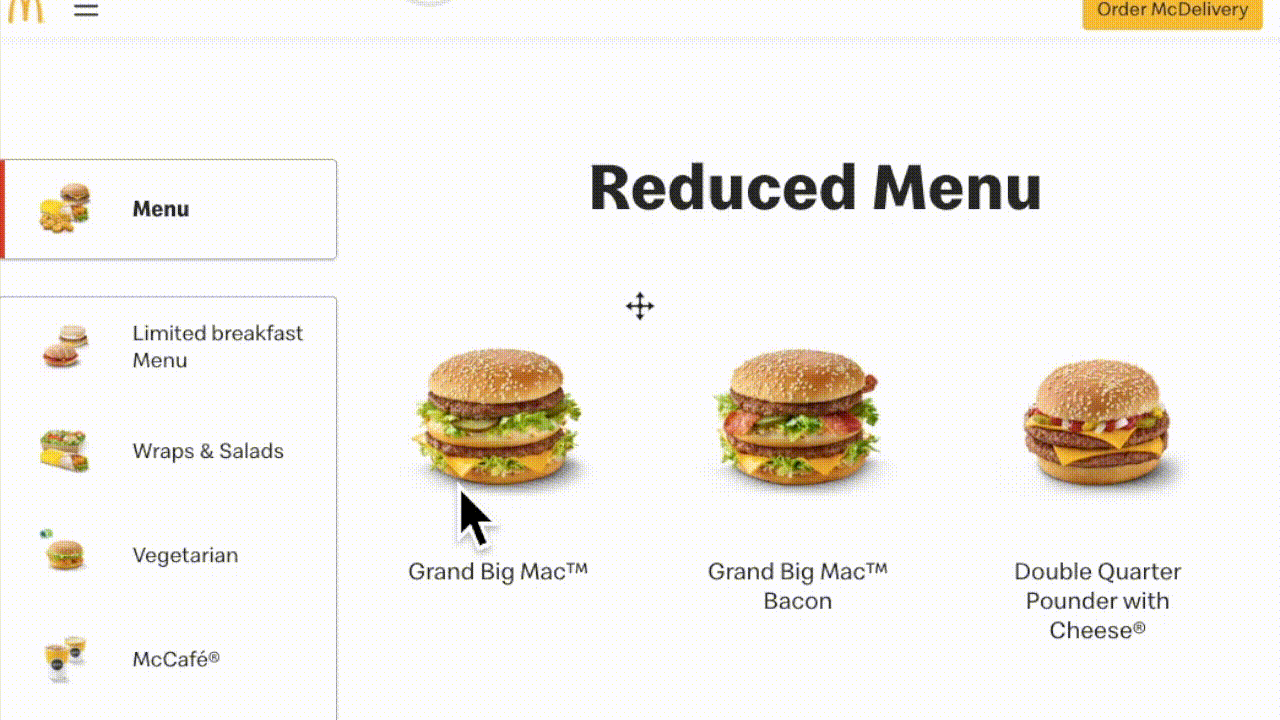
Example 2: Pret A Manger
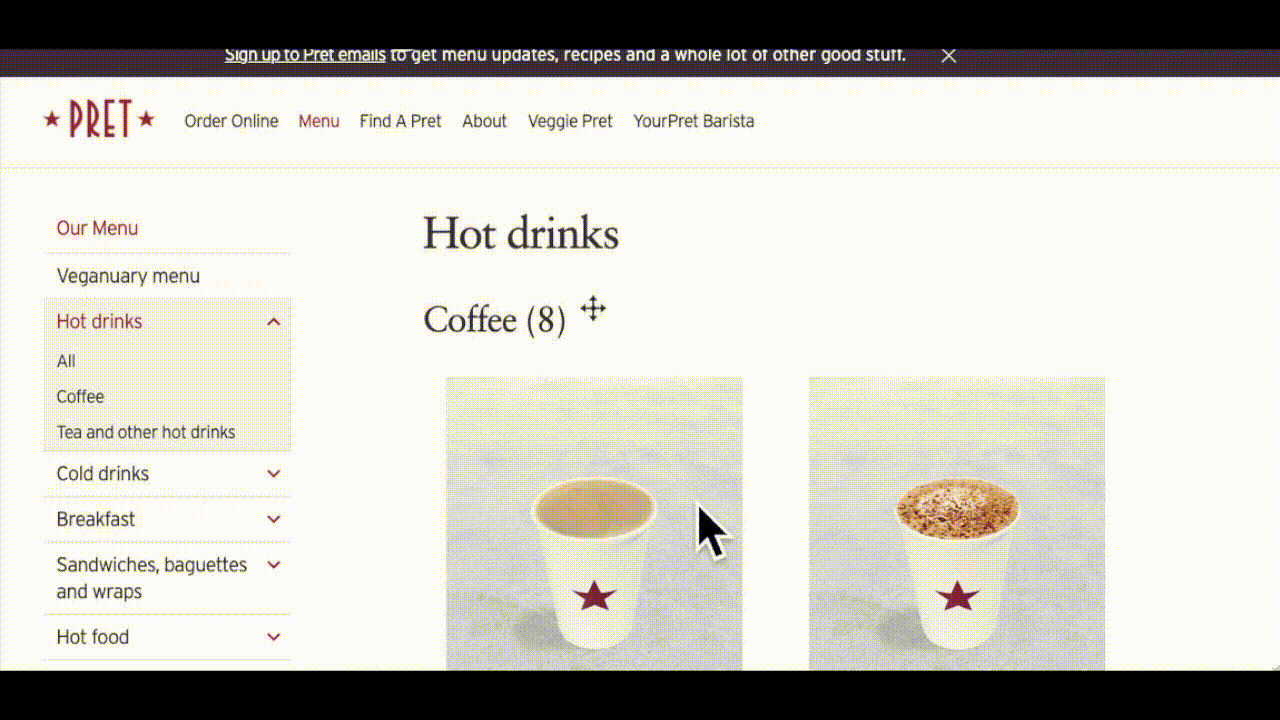
Example 3: Nando’s
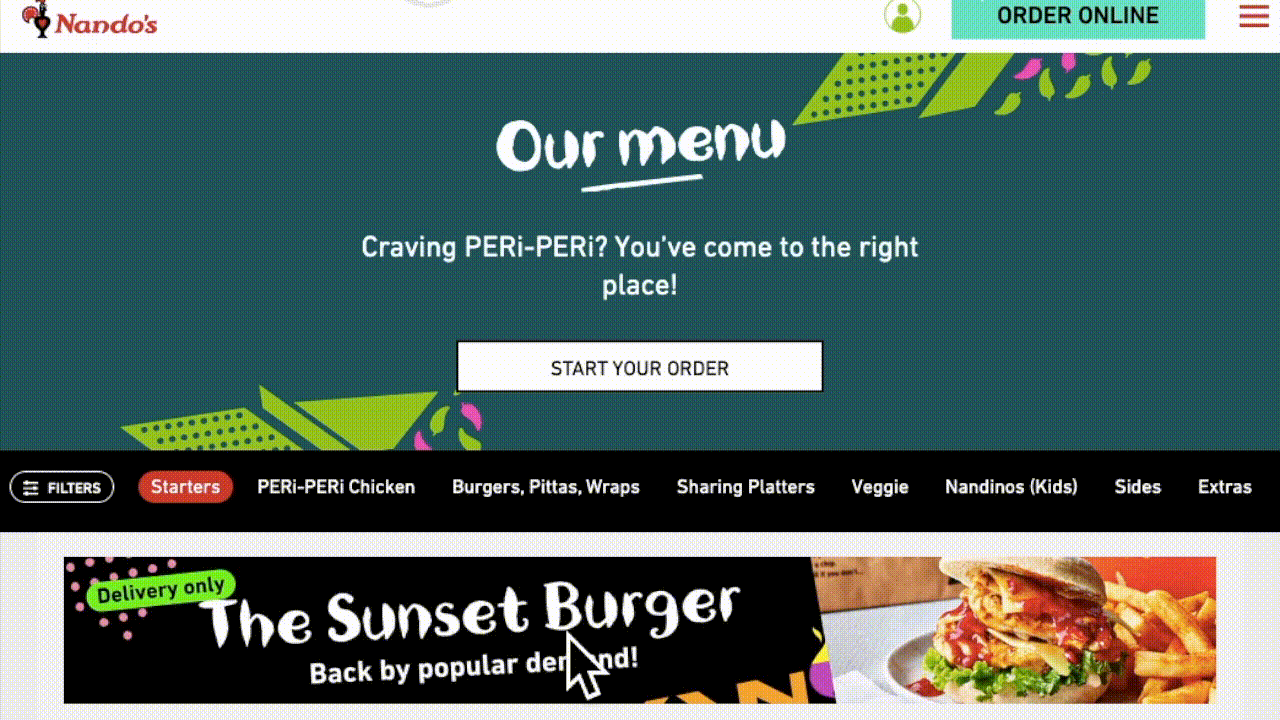
Restaurants that provide nutritional information on individual product pages: McDonald’s, Wetherspoon, Costa, Greggs, Nando’s, Burger King, Wagamama, Pret A Manger, Caffè Nero, Revolution Bars, PAUL, Krispy Kreme, itsu, Wimpy, Chicken Cottage, Yo! Sushi, Subway, and Ben & Jerry’s.
Nutritional Table
Menus and nutritional information are presented on separate pages, with nutritional information for all products usually listed together on one page.
Example 1: Walkabout
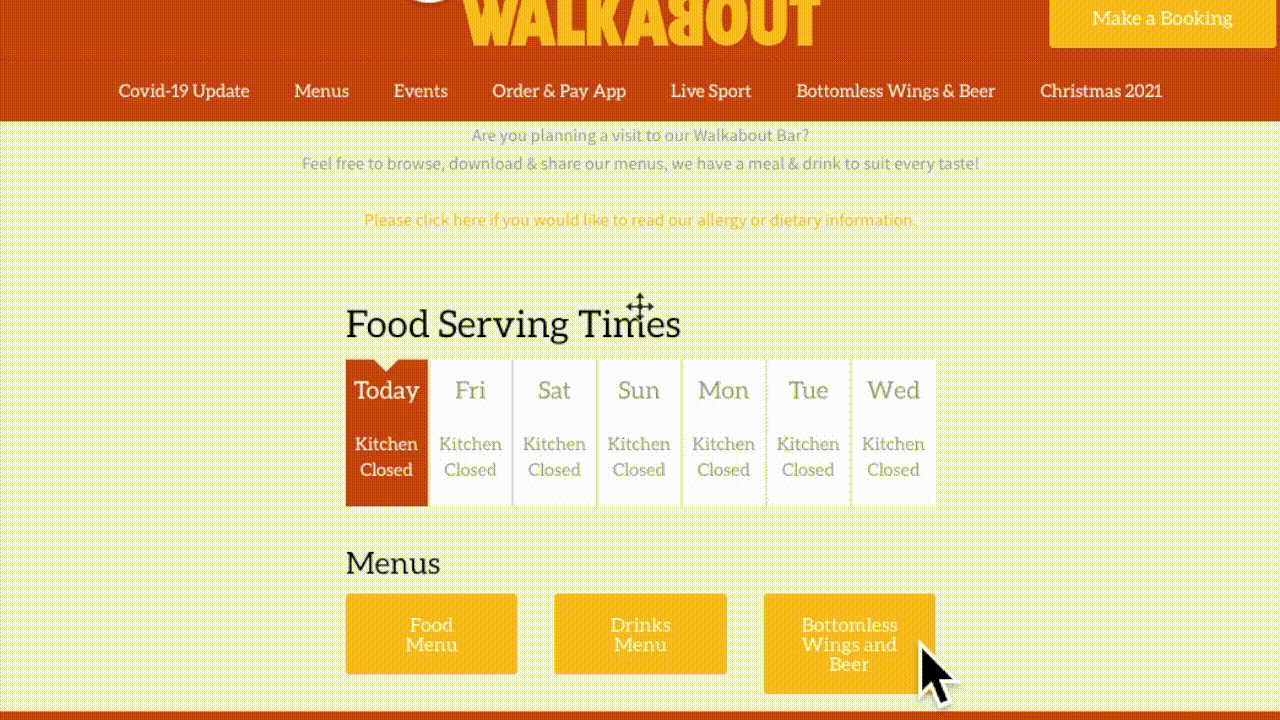
Example 2: Sizzling Pubs & Grill
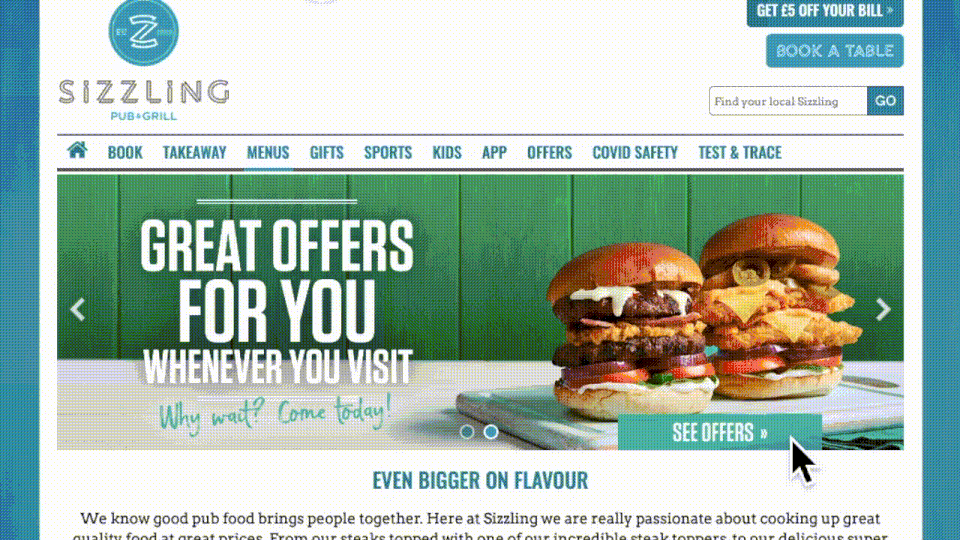
Example 3: Toby Carvery
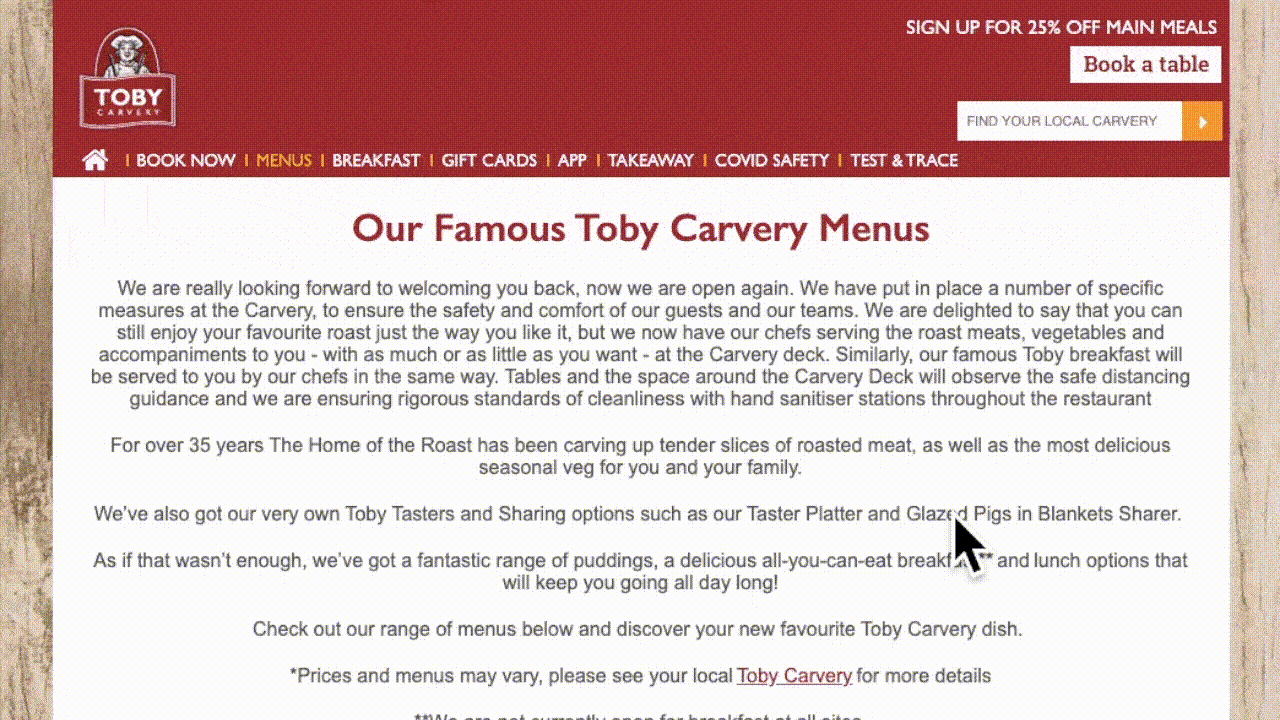
Restaurants that provide nutritional information in nutritional tables: Sizzling Pubs & Grill, Ember Inns, Toby Carvery, Yates, All Bar One, Yates, and Walkabout.
Nutritional information in pdf format only
Not only is nutritional information presented in a separate location from menu information, but a separate file has to be downloaded; sometimes PDFs are of scanned images that cannot be read with any screen reader.
Example 1: Starbucks
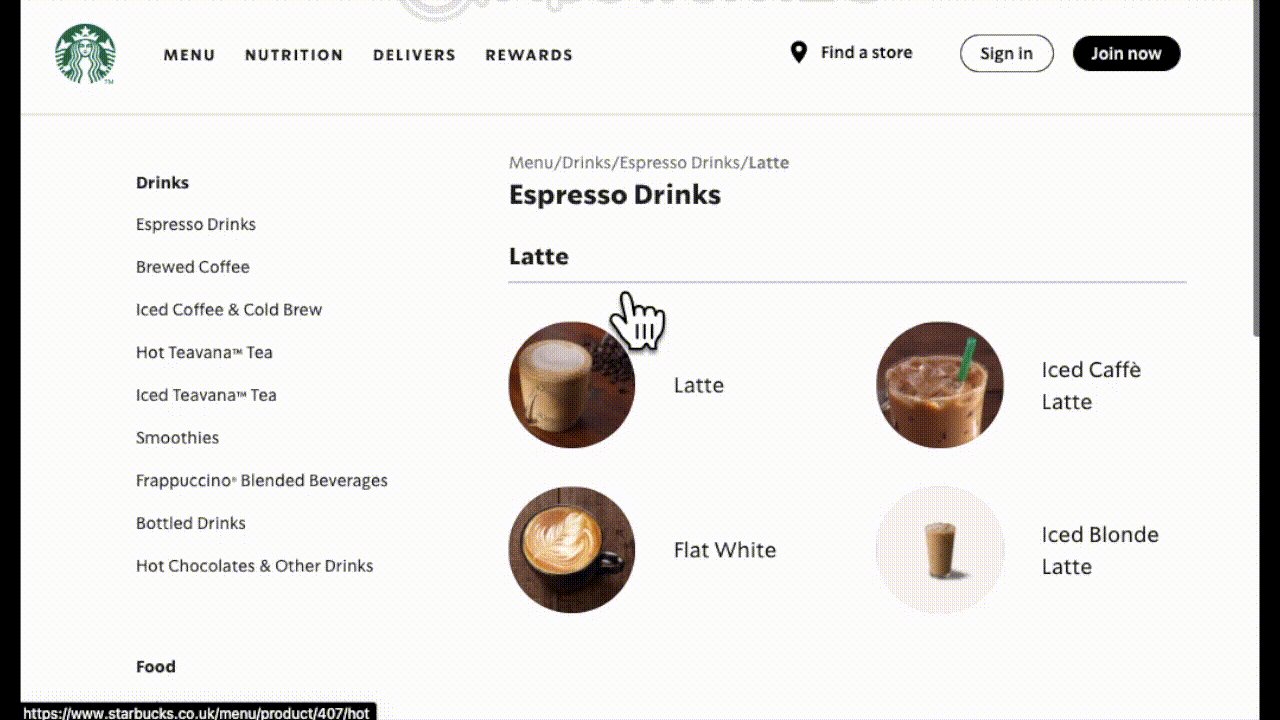
Example 2: KFC
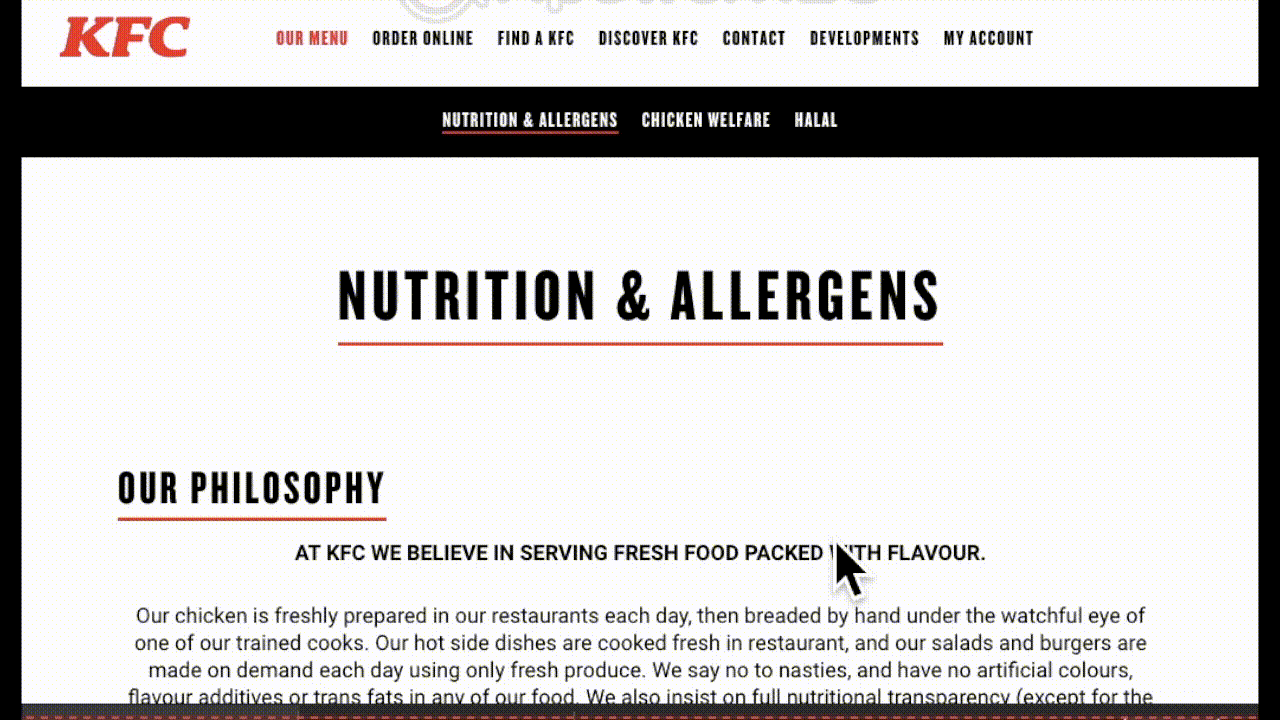
Example 3: Pizza Hut
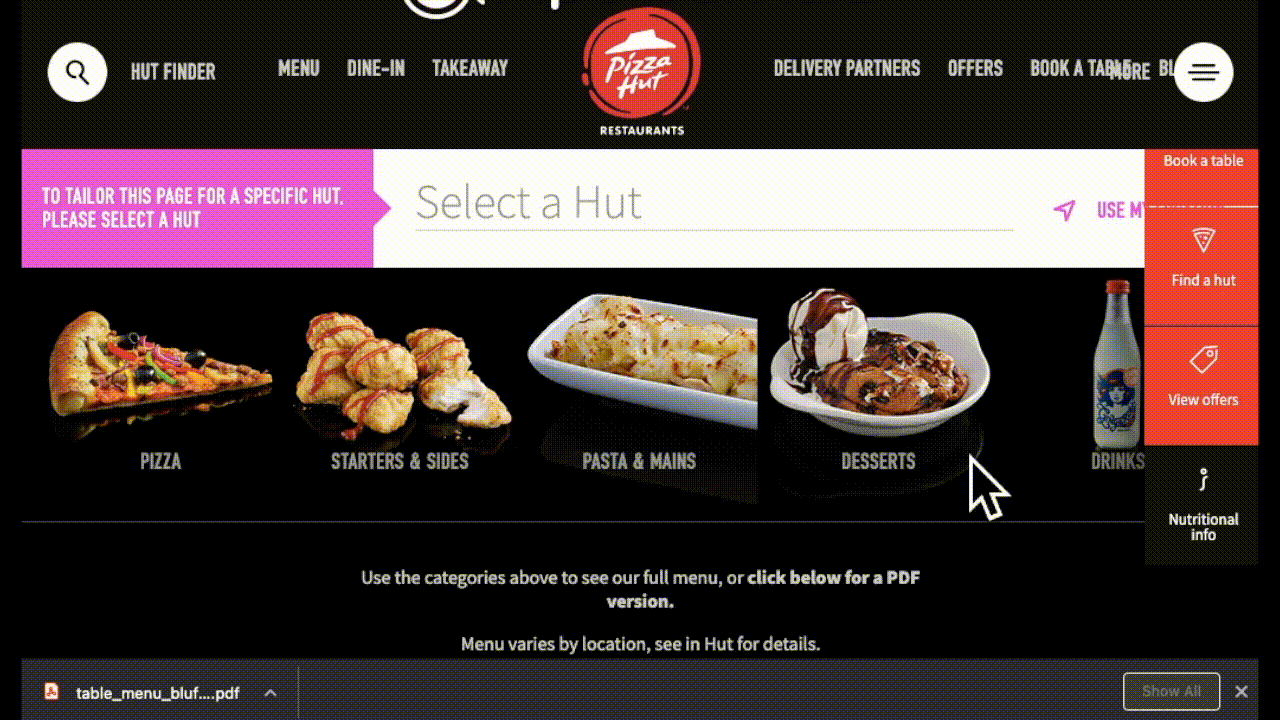
Restaurants that provide nutritional information in PDF format only: Starbucks, KFC, Domino’s Pizza, Pizza Hut, Pizza Express, Brewers Fayre, Beefeater Grill, Chef and Brewer, Zizzi, Table Table, GBK, Flaming Grill, Bill’s, Papa John’s, Ask Italian, and Loch Fyne Seafood & Grill Restaurant.
What is effective menu labelling practice?
Studies examining in-store menu labelling suggest that format of presentation may affect how effective menu labelling is in changing customers’ selections. Research studies have shown that:
- Consumers find adequate nutritional information to be credible and helpful;
- The ease of use is one of the reasons consumers like or dislike a presentation format;
- Menu labelling is more effective when presented with contextual information (e.g., daily recommended intake, exercise equivalent);
- Traffic light labelling systems can be particularly helpful.
Menu labelling suggestions
Given that systematic reviews find only a modest effect of menu labelling on customer selections, it may be particularly important to present information in a way that maximises its potential to help customers make healthier selections. This is likely to include presenting information in an easy-to-understand and accessible format.
We are not aware of any research that has examined how different menu labelling presentations on restaurant websites affect customer behaviour. However, after reviewing the various presentation formats currently used, we recommend that restaurants:
- Follow best practice guidance on website accessibility, matching as a minimum the 2018 website accessibility regulations.
- Present nutritional information on individual product pages if possible: our researchers found that nutritional information presented on individual product pages was the most accessible and user-friendly; if PDFs must be used, these should at least be readable by screen readers.
- Provide adequate nutritional information: we recommend restaurants provide at least serving size, calories and nutrients per serving, and calorie and nutrient density.
- Provide consistent and accurate nutritional information for all products currently on restaurants’ menus.
- Experiment with traffic light labelling.
As well as maximising the potential for menu labelling to impact on customers’ selections, these suggestions should also make nutritional information more accessible to those seeking to evaluate the impact of menu labelling on the nutritional content of food served. This in turn can help inform policymaking in this area.
Mandatory in-store calorie labelling has the potential to change both what customers select when eating away from home, and what food is available to them. As more purchasing moves online, more careful consideration of how calorie and nutritional information is provided on restaurant websites has the potential to maximise both the impact of labelling policies and our ability to monitor it.
References and further reading
- Department of Health and Social Care, July 2020. Tackling obesity: empowering adults and children to live healthier lives. www.gov.uk/government/publications/tackling-obesity-government-strategy/tackling-obesity-empowering-adults-and-children-to-live-healthier-lives
- Department of Health and Social Care, September 2018. Government response: mandating calorie labelling in the out-of-home sector. www.gov.uk/government/consultations/calorie-labelling-for-food-and-drink-served-outside-of-the-home
- GOV.UK, May 2018. Understanding accessibility requirements for public sector bodies www.gov.uk/guidance/accessibility-requirements-for-public-sector-websites-and-apps
- Hwang, J., & Lorenzen, C. L. (2008). Effective nutrition labeling of restaurant menu and pricing of healthy menu. Journal of Foodservice, 19(5), 270-276. doi.org/10.1111/j.1748-0159.2008.00108.x
- Levy, A. S., Fein, S. B., & Schucker, R. E. (1992). More effective nutrition label formats are not necessarily preferred. Journal of the American Dietetic Association, 92(10), 1230-1234. pubmed.ncbi.nlm.nih.gov/1401661/
- Liu, P. J., Roberto, C. A., Liu, L. J., & Brownell, K. D. (2012). A test of different menu labeling presentations. Appetite, 59(3), 770-777.
- Theis, DRZ and Adams, J. Differences in energy and nutritional content of menu items served by popular UK chain restaurants with versus without voluntary menu labelling: a cross-sectional study. PLOS ONE; 16 Oct 2019; DOI: doi.org/10.1371/journal.pone.0222773
- Thorndike, A. N., Riis, J., Sonnenberg, L. M., & Levy, D. E. (2014). Traffic-light labels and choice architecture: promoting healthy food choices. American journal of preventive medicine, 46(2), 143-149. doi.org/10.1016/j.amepre.2013.10.002
- Roberto, C. A., & Khandpur, N. (2014). Improving the design of nutrition labels to promote healthier food choices and reasonable portion sizes. International Journal of Obesity, 38(1), S25-S33. doi.org/10.1038/ijo.2014.86
- Sinclair, S. E., Cooper, M., & Mansfield, E. D. (2014). The influence of menu labeling on calories selected or consumed: a systematic review and meta-analysis. Journal of the Academy of Nutrition and Dietetics, 114(9), 1375-1388. doi.org/10.1016/j.jand.2014.05.014

 MRC Epidemiology Unit
MRC Epidemiology Unit